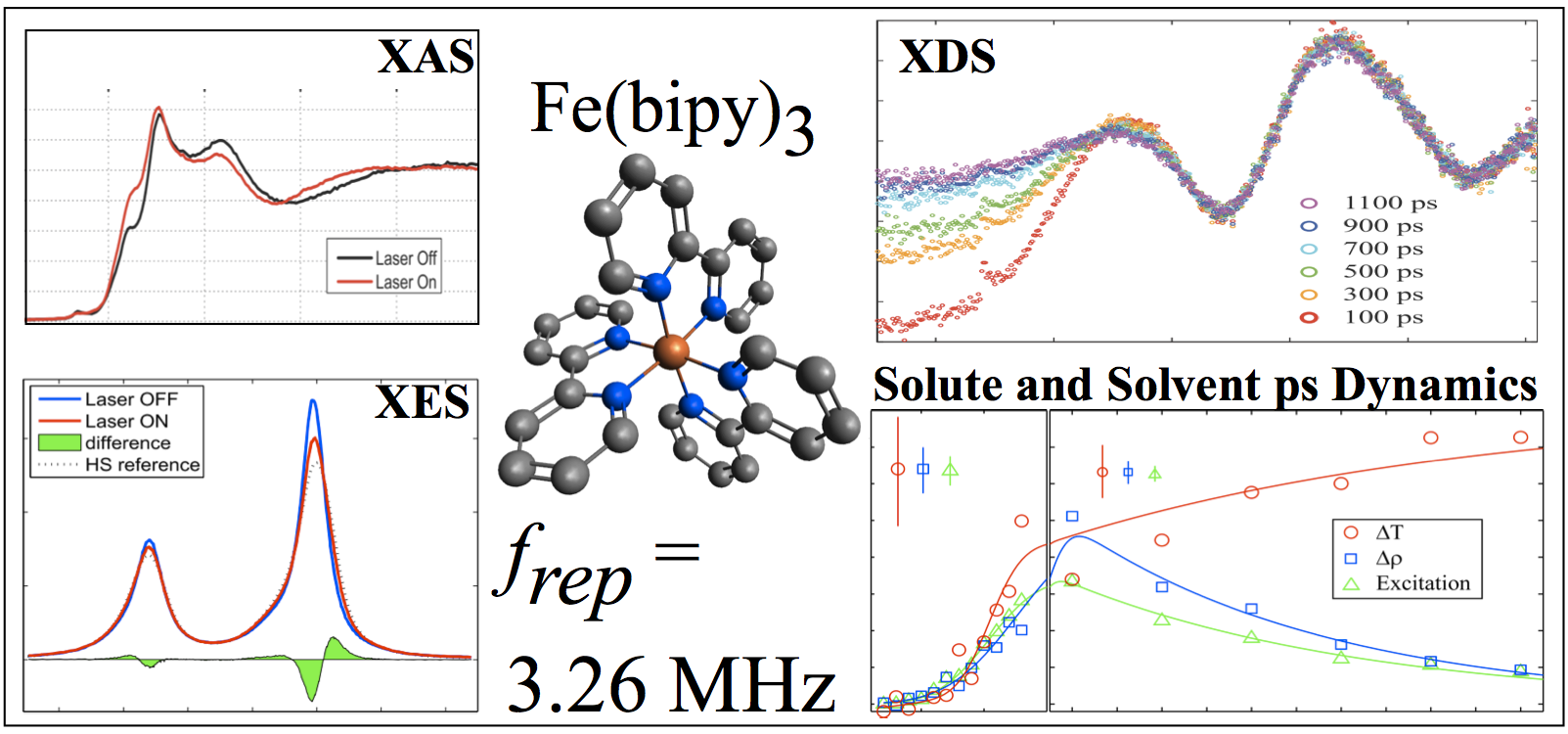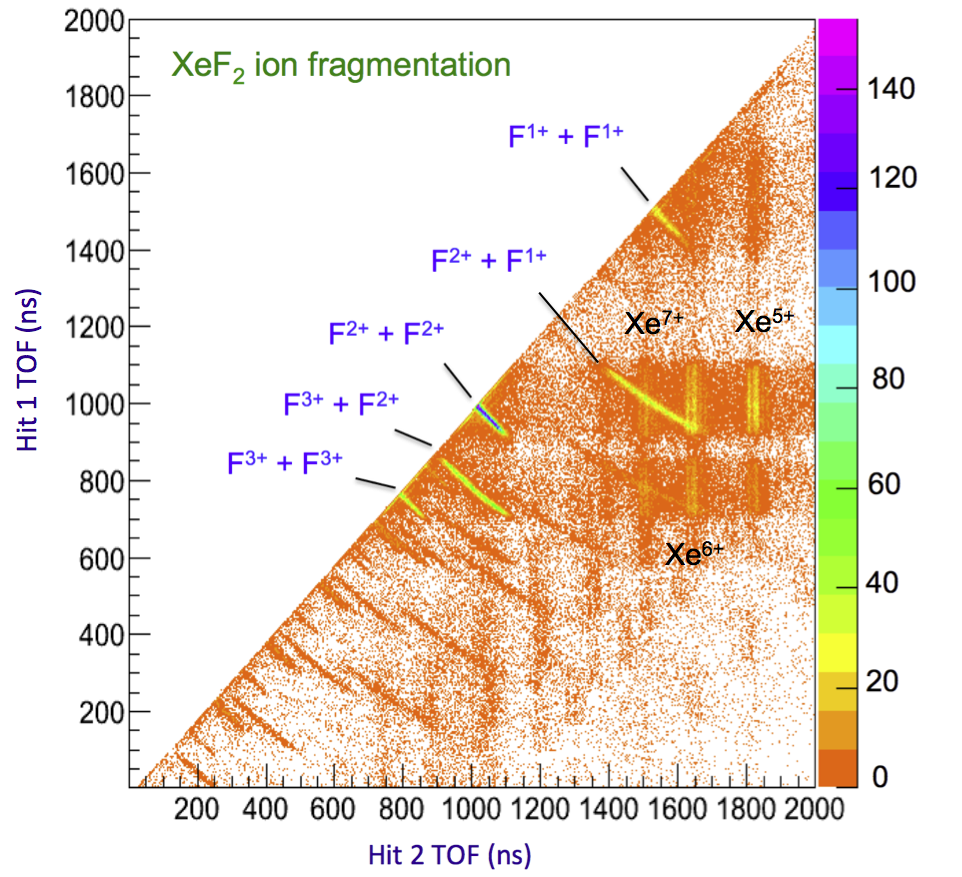|
X-ray absorption by a heavy atom produces an inner-shell hole that decays in a multi-step process with the ejection of fluorescent x rays and Auger electrons that results in high charge states on the atomic ion. In molecules, the inner-shell hole and the holes produced by the first decay steps remain localized, but eventually charge is redistributed to neighboring atoms and the system Coulomb explodes. This process is responsible for x-ray damage in molecules and materials and has been exploited for targeted destruction of malignant cells. To study the physics of core-hole dynamics in small molecules, we use APS x rays to ionize K-shell electrons from a heavy atom such as Br, I, and Xe of the molecules IBr, CH2BrI, and XeF2. A fluorescent x-ray from the K-shell hole is detected and triggers an x-ray/ion coincidence measurement of the fragment ions. Figure 8 shows an example of a scatter plot of ion coincidences in XeF2. The data yield the ion charge state distributions and kinetic energies released to the ions, and comparisons are made with calculated core-hole decays. Femtosecond XFEL pulses are also being used to explore core-hole decay dynamics.
|


